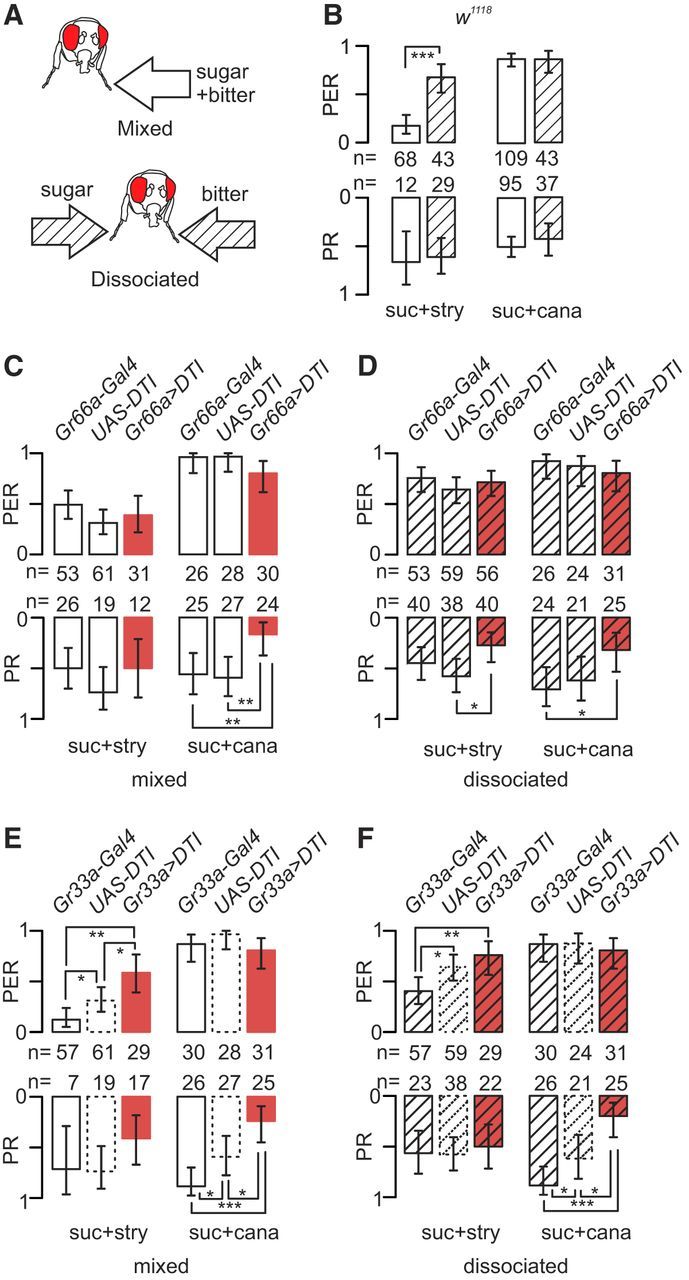Figure 2.

Strychnine-induced inhibition of the PER on the legs is more potent in a mixture with sugar than when presented separately, and bitter-cell ablation reduces the PR. A, Flies were stimulated with 100 mm sucrose and a bitter chemical during 5 s by gently touching one leg with a mixture (“mixed” presentation) or each tarsus separately with sugar on one side and bitter on the other side (“dissociated” presentation). The bitter stimulus was 100 mm sucrose plus 10 mm strychnine (suc + stry) or 100 mm sucrose plus 40 mm l-canavanine (suc + cana). B, w1118 flies respond more strongly in the PER to the mixed (white bars) than to the dissociated stimuli (striped bars) for suc + stry (p < 0.001) but not to sucrose plus l-canavanine. PRs are not different with both stimuli. C, D, We ablated cells expressing Gr66a and recorded the responses to the same stimuli in Gr66a>DTI flies (red bars) and in the parental strains that have intact taste cells (Gr66a–Gal4 and UAS–DTI). C, PERs/PRs to mixed presentation. D, PERs/PRs to dissociated presentation (striped bars) of the same stimuli. Note the higher PER to suc + stry in the dissociated presentation compared with the mixed stimulus. E, F, We also ablated cells expressing Gr33a and recorded the responses to these stimuli in Gr33a>DTI flies (red bars) and Gr33a–Gal4 flies (with intact taste cells). UAS–DTI flies were not tested again, but the previous values are reported on the graph for convenience. E, PERs/PRs to the mixed presentation. F, PERs/PRs to the dissociated stimuli. Graph legends, statistical tests, and abbreviations are the same as in Figure 1.
